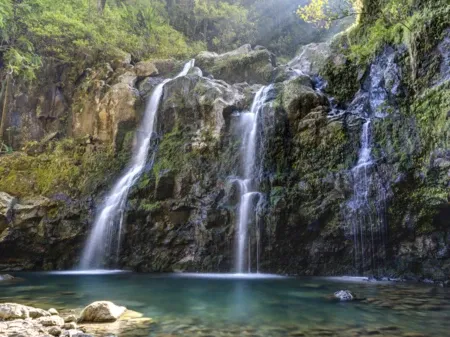Travel with AAA
Welcome to AAA Trip Canvas. Click to Learn More.
"Our Experts Are The Dream Makers."
Travel Deals You Won't Want to Miss
Hotels, rental cars, flights, last-minute bookings, rail, cruise & tour vacation packages. Get exclusive benefits, added perks and savings when you book with AAA Travel. Last-minute Travel Deals. Best Travel Deals.
Featured Destinations
AAA's featured cities offer inspiration and resources to help you plan the perfect vacation. Whether you're just starting to map out your trip, searching for cruises or vacation packages, scouting hotel deals, exploring dining options, or discovering exciting things- to- do, we've got you covered.
"Real Articles. Real Tips. Real Travel."
Top Travel Articles to Plan Your Next Adventure
Explore All travel TipsTravel Videos that Inspire
Follow and Subscribe for More Travel Inspiration
AAA Road Trips
Explore Road TripsTravel with Someone You Trust®
Your Dreams. Our Expertise.
Turn your vacation ideas into unforgettable adventures with AAA. Discover everything from guided tours to vacation packages to cruises, hotels, restaurants and attractions.
Get Ideas from the Pros
As one of the largest travel agencies in North America, we have a wealth of travel planning recommendations to share! Browse our articles and videos for inspiration, or jump right in with preplanned AAA Road Trips, cruises and vacation tours.
AAA Travel agents are travel experts who can help plan trips, book reservations and provide travel advice. Plus, AAA members have access to exclusive savings and discounts.
Trip planning: Create customized itineraries for cruises, tours, vacations and more
Reservations: Book flights, hotels, car rentals and more
Travel advice: Get recommendations for destinations, activities and restaurants
Passport and visa services: Get help with photos, applications and expedited services
International driving permits: Get help with applications and IDPs
Maps and guidebooks: Get help with routing for road trips
Foreign currency: Get help with money management
Additional Destinations
- Atlanta, GA
- Phoenix, AZ
- Tampa, FL
- Boston, MA
- Fort Lauderdale, FL
- Chicago, IL
- Seattle, WA
- Dallas, TX
- Washington, D.C.
- San Francisco, CA
- Nashville, TN
- Maui, HI
- Salt Lake City, UT
- Portland, OR
- West Palm Beach, FL
- Savannah, GA
- Cleveland, OH
- St. Louis, MO
- Baltimore, MD
- Pittsburgh, PA
- Charlotte, NC
- Honolulu, HI
- Houston, TX
- Philadelphia, PA
- Fort Myers, FL




